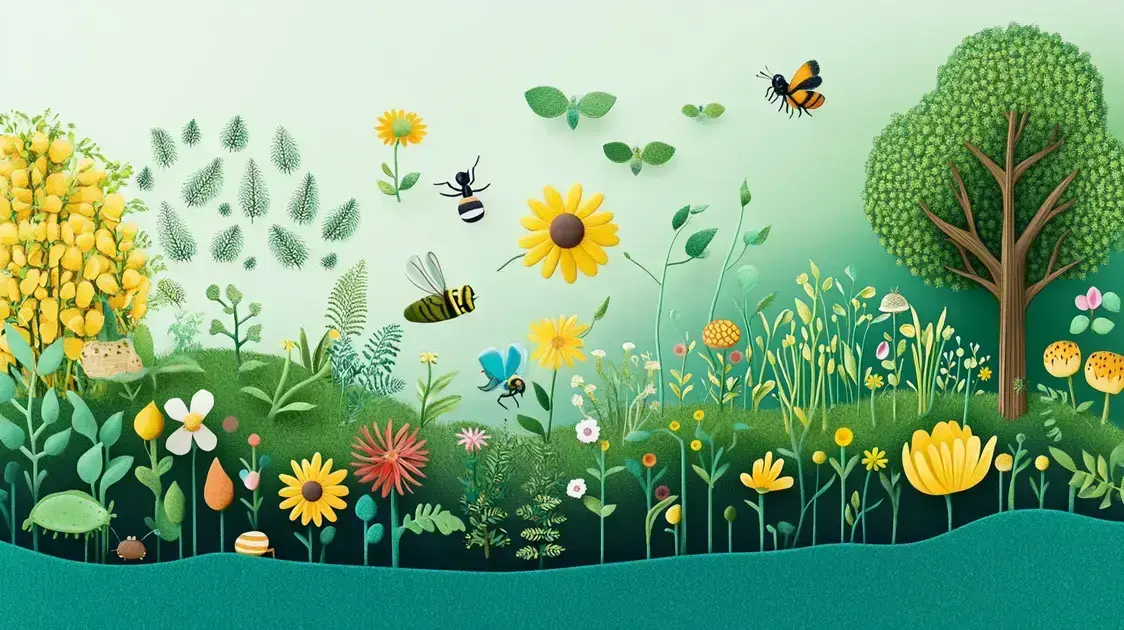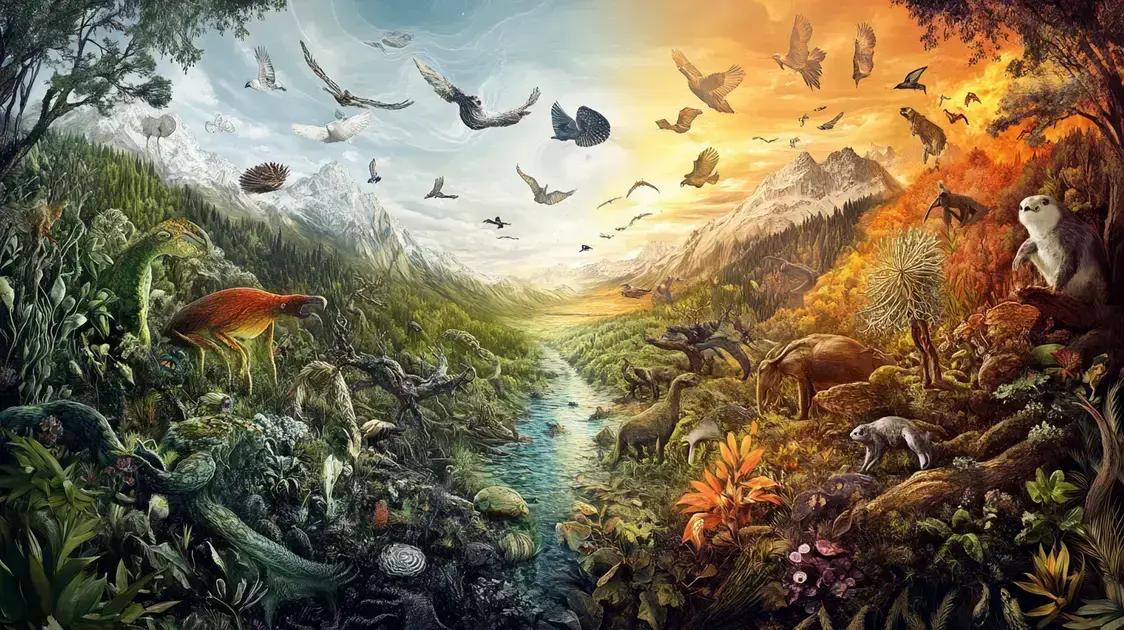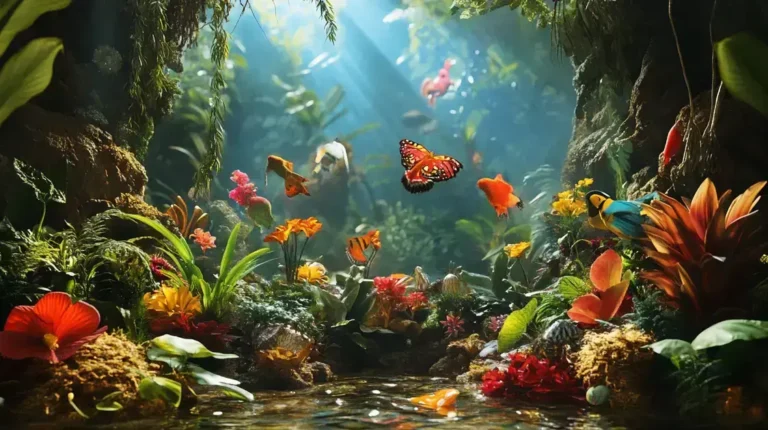Announcements
Symbiotic relationship is essential interactions between species that help them survive and thrive together. These bonds can be mutually beneficial, or one species may benefit at the expense of another.
From mutualism to parasitism, these connections shape ecosystems in many ways. Understanding them reveals how life relies on these partnerships to stay balanced.
Curious about how these relationships work in nature? Keep reading to uncover more!
Announcements
Understanding Symbiotic Relationships
In nature, a symbiotic relationship describes the close interaction between different species. These connections can enhance the survival and growth of all involved. To understand these relationships better, it’s essential to recognize how they work and the benefits they provide.
What is a Symbiotic Relationship?
A symbiotic relationship is any interaction between two different organisms that live together in a closely knit way. These interactions can be beneficial, neutral, or harmful to one or both parties.
Announcements
Types of Interactions
There are several types of symbiotic relationships:
- Mutualism: Both species benefit from the relationship. For example, bees pollinate flowers while feeding on nectar, helping flowers reproduce.
- Commensalism: One species benefits while the other remains unaffected. An example is barnacles attaching to a whale. The barnacles gain a ride, while the whale does not lose anything.
- Parasitism: One species benefits at the expense of the other. A classic example is how ticks feed on the blood of mammals, harming them in the process.
The Role of Symbiosis in Nature
Understanding these connections helps to appreciate the complexity of ecosystems. Every organism plays a crucial role in maintaining balance. Symbiotic relationships contribute to nutrient cycles, species diversity, and ecosystem stability.
Factors Influencing Symbiotic Relationships
The environment, availability of resources, and evolutionary pressures influence how these relationships develop. Over time, species may adapt to become more interdependent due to changing conditions.
Types of Symbiotic Relationships
Symbiotic relationships come in various forms, each serving a unique purpose in nature. Understanding these types of symbiotic relationships can help us appreciate how organisms interact and depend on one another for survival.
1. Mutualism
In mutualism, both species benefit from the relationship. A classic example is the connection between pollinators, like bees, and flowering plants. Bees obtain nectar, providing energy, while helping plants reproduce by spreading pollen.
2. Commensalism
Commensalism is when one species benefits, and the other is not significantly affected. For instance, barnacles attach to whales. The barnacles gain a free ride through the water to access food, while the whale remains unaffected.
3. Parasitism
In parasitism, one organism benefits at the expense of another. An example is ticks feeding on the blood of mammals. While the tick gains nourishment, the host animal suffers from loss of blood and potential diseases.
4. Facilitation
Facilitation occurs when one species makes the environment better for another species. For example, some plants can improve soil quality, allowing other plants to grow more successfully nearby. This helps various plants thrive in an ecosystem.
5. Amensalism
Amensalism is a less understood relationship where one species is harmed while the other is unaffected. An example is when larger animals walk through a habitat, crushing smaller plants without intending to harm them.
6. Phoresy
Phoresy is a specific type of commensalism where one organism uses another for transportation. For instance, some mites attach themselves to larger insects to travel long distances without expending energy.
The Importance of Symbiosis in Ecosystems

The role of symbiosis in ecosystems is vital. These relationships between different species create balance and enhance survival for all involved. Understanding their importance can help us appreciate how life thrives on Earth.
1. Enhancing Biodiversity
Symbiosis promotes biodiversity by allowing multiple species to coexist in a shared environment. This diversity is crucial for resilient ecosystems that can withstand changes and stresses.
2. Nutrient Cycling
In many ecosystems, symbiotic relationships aid in nutrient cycling. For example, nitrogen-fixing bacteria in the roots of legume plants help convert atmospheric nitrogen into forms usable by plants. This process enriches the soil, benefiting the entire ecosystem.
3. Ecosystem Stability
Symbiotic relationships contribute to a stable environment. When species rely on each other for food, protection, or other needs, the disruption of one species can impact others. Healthy symbiotic relationships create a web of support, making ecosystems more resistant to disturbances.
4. Pollination
Many plants depend on animals for pollination. This relationship helps plants to reproduce, which in turn supports food webs and diverse habitats. Without these interactions, many plant species could decline or even become extinct.
5. Examples of Mutual Aid
Various species rely on one another for survival. For instance, clownfish live among sea anemones. The clownfish gets protection from predators, while the anemones benefit from the nutrients in clownfish waste. This mutual aid supports the health of coral reefs.
6. Climate Adaptation
Symbiotic relationships also play a role in how ecosystems adapt to climate change. For instance, certain fungi help trees absorb more water and nutrients, allowing them to survive in drier conditions. This adaptability is crucial in our changing world.
Examples of Symbiotic Relationships
Examples of symbiotic relationships abound in nature, demonstrating how different species cooperate and thrive together. Here are some notable instances:
1. Clownfish and Sea Anemones
Clownfish live among the tentacles of sea anemones. The clownfish gain safety from predators, while the sea anemone benefits from the nutrients found in clownfish waste. This mutualism is a perfect example of protection and nourishment.
2. Bees and Flowers
Bees visit flowers to collect nectar, which they use for food. In return, as they move from flower to flower, they pollinate plants, allowing them to reproduce. This relationship is essential for food production and biodiversity.
3. Oxpeckers and Large Mammals
Oxpeckers are birds that feed on ticks and other parasites found on large mammals like rhinos and buffaloes. The oxpeckers get food, while the mammals enjoy relief from pests, showcasing a clear mutualist interaction.
4. Mycorrhizal Fungi and Plants
Mycorrhizal fungi form a partnership with plant roots. The fungi help plants absorb nutrients and water, while the plants provide sugar and organic compounds to the fungi. This symbiosis is critical for plant health in many ecosystems.
5. Cleaner Wrasse and Fish
Cleaner wrasses are small fish that eat parasites off larger fish. This relationship helps the larger fish maintain health, while cleaner wrasses gain a food source. It’s a well-known example of mutualism in the ocean.
6. Termites and Protozoa
Termites cannot digest wood on their own. They rely on protozoa in their guts to break down cellulose in wood. In this relationship, termites provide habitat and food for protozoa, and in return, they gain the ability to digest wood.
Benefits of Symbiosis for Species
The benefits of symbiosis for species are profound, resulting in positive outcomes for both parties involved. Here are several key advantages:
1. Enhanced Survival
Many species rely on symbiotic relationships to survive. For example, the partnership between clownfish and sea anemones provides the clownfish with protection from predators. In return, the clownfish helps keep the anemone clean, ensuring both species thrive.
2. Resource Efficiency
Symbiosis allows species to use resources more efficiently. Plants that engage with mycorrhizal fungi gain better access to nutrients and water, while fungi receive carbohydrates from the plants. This mutual support leads to healthier plants and enhanced soil quality.
3. Improved Reproduction
Many plants depend on pollinators, like bees, to reproduce. The relationship benefits the plants by ensuring they can produce seeds, while bees receive food. This symbiotic connection is crucial for the continuation of many plant and bee species.
4. Increased Resilience
Symbiotic relationships can enhance ecological resilience. When species work together, they create networks that can better withstand environmental changes and disturbances. For example, diverse plant species forming a network with mycorrhizae can adapt better to drought conditions.
5. Access to Nutrients
In symbiotic relationships, one species often provides nutrients that the other cannot obtain alone. For instance, some animals consume parasites from larger hosts, gaining food, while the host benefits from reduced pest populations, showcasing a balance that fosters health for both.
6. Adaptation and Evolution
Symbiosis can drive evolution and adaptation. As species interact closely, they can develop new traits that benefit their relationship. For example, the mutual relationship between certain plants and animals can lead to specialized adaptations that improve survival chances for both.
How Symbiotic Relationships Evolve

Symbiotic relationships evolve through a complex process influenced by various factors in nature. Understanding how these relationships develop can provide insight into the balance of ecosystems.
1. Natural Selection
Natural selection plays a crucial role in the evolution of symbiotic relationships. Species that benefit from their interactions are more likely to survive. Over time, traits that enhance cooperation and resource sharing can become more common in these organisms.
2. Environmental Changes
Changes in the environment can drive the evolution of symbiotic relationships. For example, in response to climate shifts, some species may start relying on others for food or shelter, leading to new partnerships. These adaptations help them thrive in changing conditions.
3. Coevolution
Coevolution occurs when two species influence each other’s evolution. For instance, a plant may evolve traits to attract pollinators, while the pollinators may evolve to better access the plant’s nectar. This interconnected evolution strengthens their relationship.
4. Genetic Variation
Genetic variation within species allows for different adaptations to emerge. Some individuals might develop characteristics that make them more susceptible to forming beneficial relationships. Those individuals that succeed can pass these traits to their offspring, gradually shifting the dynamics of symbiosis.
5. Behavioral Changes
As species interact, their behaviors can evolve as well. Animals may learn to rely on specific partners for food or protection, leading to behavioral adaptations that enhance their symbiotic relationships. For example, cleaner fish learn to recognize specific hosts and adapt their behaviors accordingly.
6. Mutual Benefits Over Time
Over generations, the benefits of a symbiotic relationship may become more pronounced, encouraging the evolution of these partnerships. Species that successfully cooperate can thrive together, leading to more stable ecosystems. This mutualism is a key factor in the long-term sustainability of these relationships.
Understanding the Impact of Symbiotic Relationships
Symbiotic relationships are essential to the health and stability of ecosystems. Through mutual interactions, species can enhance their survival, access resources more efficiently, and adapt to environmental changes.
By exploring types and examples of symbiotic relationships, we see the vital roles they play in maintaining biodiversity and ecological balance. From pollination to nutrient cycling, these partnerships shape the natural world.
As we learn about the evolution of symbiotic relationships, it becomes clear that they are dynamic and influenced by natural selection, coevolution, and environmental changes. Each partnership tells a story of adaptation and mutual benefit.
Recognizing the significance of symbiosis helps us appreciate the interconnectedness of life on Earth, encouraging us to protect and preserve these intricate relationships for future generations.






